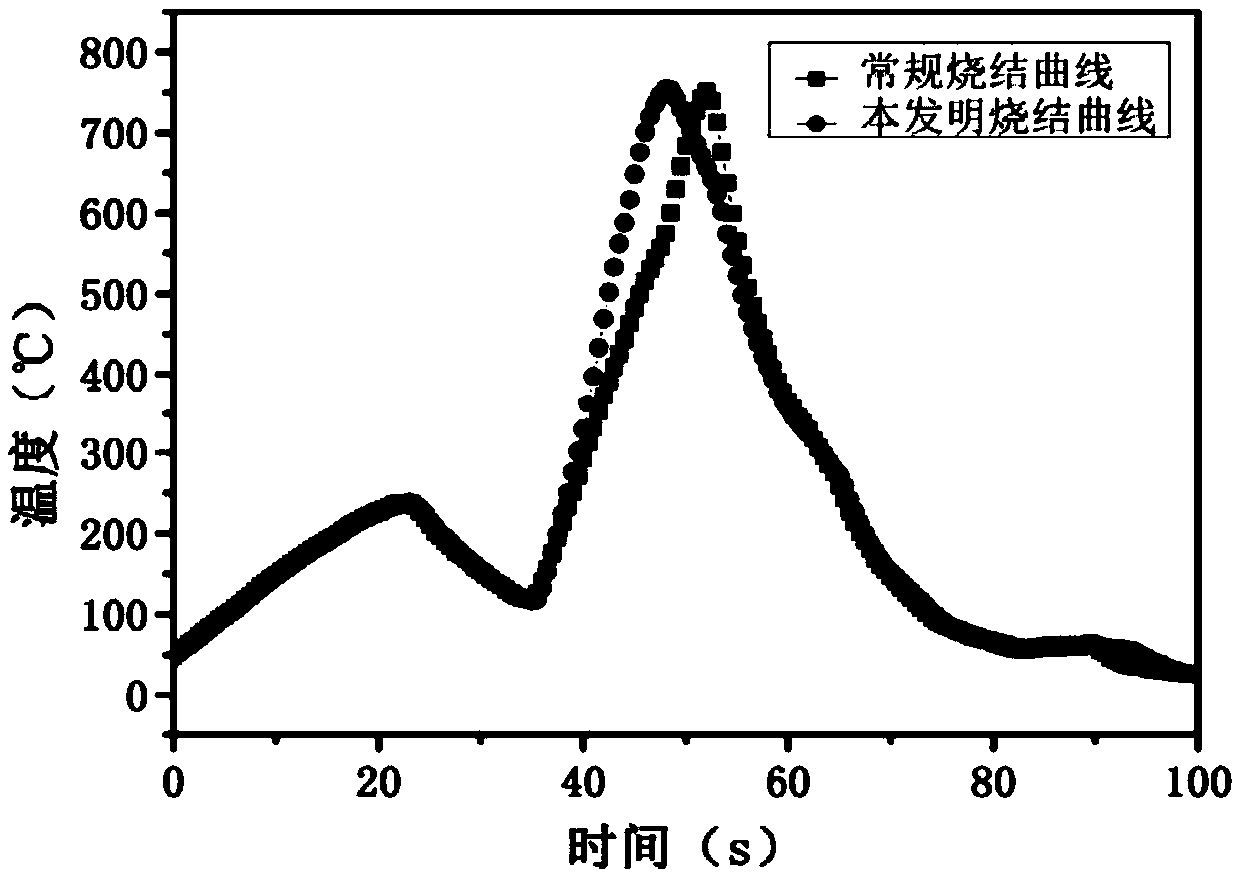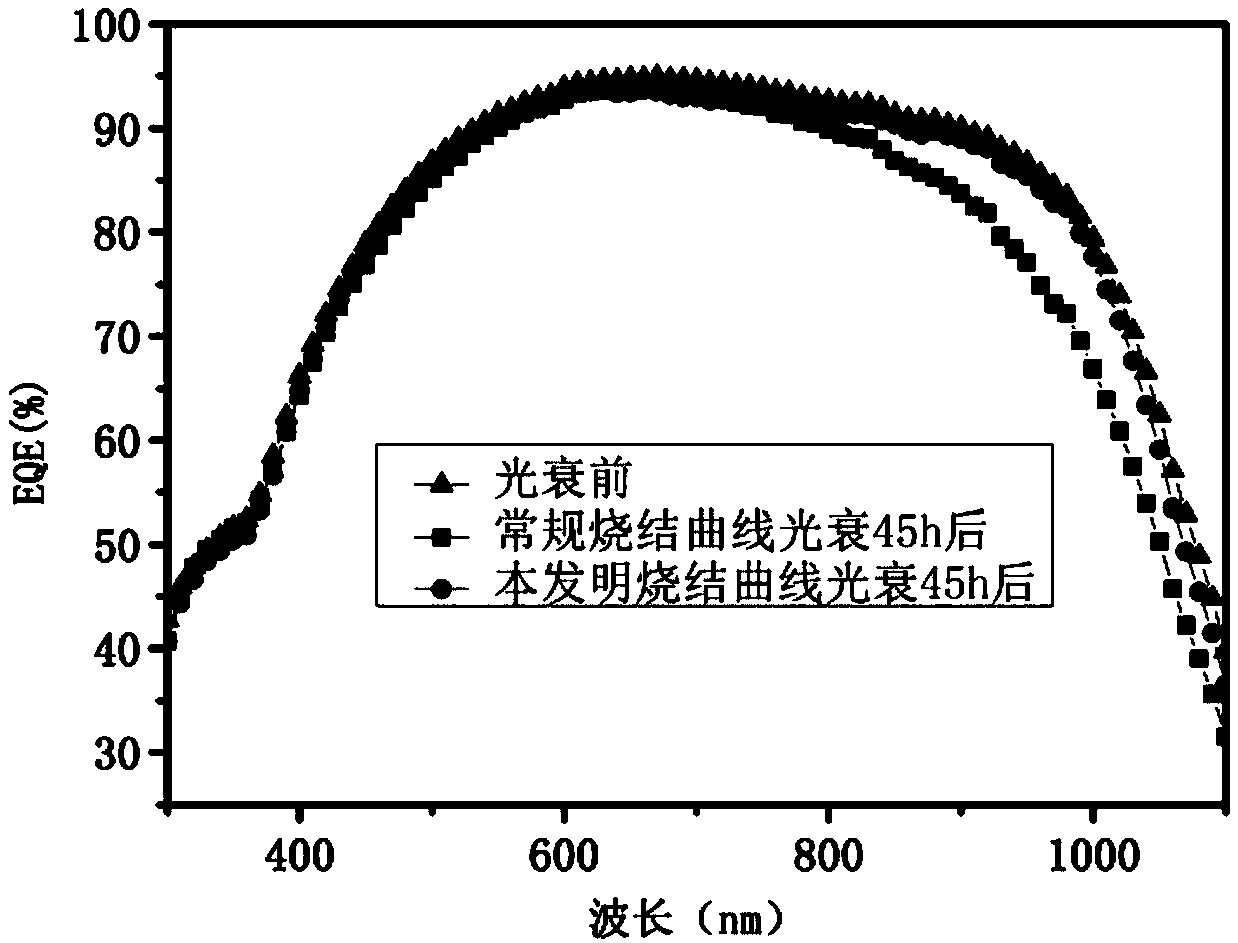Sintering method for reducing light degradation of P-type solar cell and application thereof
A solar cell and light-induced attenuation technology, which is applied in the field of solar cells, can solve the problems that restrict the development prospects of PERC technology, the large-scale light decay of polycrystalline PERC cells, and the lack of large-scale industrialization, so as to suppress the light decay effect and reduce the light intensity. Attenuation range, the effect of reducing the number of defects
- Summary
- Abstract
- Description
- Claims
- Application Information
AI Technical Summary
Problems solved by technology
Method used
Image
Examples
Embodiment 1
[0028] This embodiment provides a sintering method for reducing the light-induced attenuation of a P-type solar cell, including:
[0029] The screen-printed cells are placed on the sintering furnace belt in the sintering zone and transported at a rate of 200 inches / min. First dry in the drying zone with a temperature of 260°C, and then heat up and sinter in the sintering zone. After reaching the sintering peak temperature of 740°C, perform cooling and sintering at a cooling rate of 5K / s to the sintering activation temperature of 675°C. After sintering, the The cells are cooled in a cooling zone with a temperature of 80°C.
Embodiment 2
[0031] This embodiment provides a sintering method for reducing the light-induced attenuation of a P-type solar cell, including:
[0032] The screen-printed cells are placed on the sintering furnace belt in the sintering zone and transported at a speed of 260 inches / min. Firstly dry in the drying zone with a temperature of 300°C, then heat up and sinter in the sintering zone. After reaching the sintering peak temperature of 790°C, perform cooling and sintering at a cooling rate of 40K / s to the sintering activation temperature of 675°C. After sintering, the The cells are cooled in a cooling zone with a temperature of 100°C.
Embodiment 3
[0034] This embodiment provides a sintering method for reducing the light-induced attenuation of a P-type solar cell, including:
[0035] The screen-printed cells are placed on the sintering furnace belt in the sintering zone and transported at a speed of 230 inches / min. First dry in the drying zone with a temperature of 280°C, and then heat up and sinter in the sintering zone. After reaching the sintering peak temperature of 760°C, perform cooling and sintering at a cooling rate of 25K / s to the sintering activation temperature of 675°C. After sintering, the The cells are cooled in a cooling zone with a temperature of 90°C.
PUM
 Login to View More
Login to View More Abstract
Description
Claims
Application Information
 Login to View More
Login to View More - R&D
- Intellectual Property
- Life Sciences
- Materials
- Tech Scout
- Unparalleled Data Quality
- Higher Quality Content
- 60% Fewer Hallucinations
Browse by: Latest US Patents, China's latest patents, Technical Efficacy Thesaurus, Application Domain, Technology Topic, Popular Technical Reports.
© 2025 PatSnap. All rights reserved.Legal|Privacy policy|Modern Slavery Act Transparency Statement|Sitemap|About US| Contact US: help@patsnap.com



